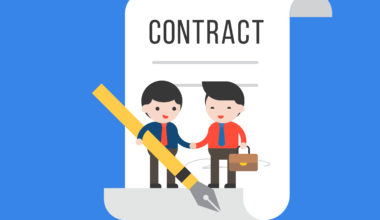Enticing customers into signing large deals requires aligning the deal to their company objectives and multiplying their value in exchange for a commitment. To structure a value multiplying deal, you first need to begin with a discovery phase, where you gather information from your client to understand their perception of your product’s value and how it aligns with their organizational goals. A proper discovery phase is critical to big deal success, and I will explain a general framework in this article.
Before we dive in deeper, let’s discuss value. Customers purchase a product because it provides economic value. In general, the value they are obtaining exceeds the cost. Customers must believe that the value they are receiving from your product exceeds the cost (and usually substantially so); otherwise, your company would be out of business. The key to closing a large deal is to construct a deal where in exchange for agreeing to a large, long-term commitment, the customer obtains a multiplier of value over purchasing the product on a one-off basis that helps them to achieve their companies goals. In other words, value multipliers are the core of long-term deals.
To go one step further, the more you can align the value multiplier to your customer’s organizational objectives (I use goals and objectives interchangeably), the easier it will be to obtain “buy-in” from the companies’ leadership.
Begin the discovery phase by asking yourself the following questions:
- What are your client’s goals over their next 12-month fiscal period? (most companies set goals annually).
- How can your companies product help to achieve these goals?
- What other sources of value does your product provide to your client?
- What information do you need from the client to confirm the value they are obtaining from your product?
- What other information do you need to calculate/estimate your product’s value creation for the client?
Your answers to the above questions will help you build a list of information you need to complete your analysis. Once you have constructed a clear picture of the information you’re missing, reach out to your client. If you need extensive detail or some of the data is sensitive and not suitable to share over email, I recommend setting up a discovery call. Share a list of the information you’re seeking with your client at least three business days ahead of the call. Once you have gathered the necessary information, you can move on to your analysis.
Begin your analysis by making a table. In the table, write your client’s goals and objectives in one column and your product’s value proposition in the other. For example, imagine that your company makes a SaaS product that outsources certain HR compliance functions to reduce costs. Your product allows companies to minimize HR headcount, maintain up-to-date policies, and avoid fines and lawsuits. Here is an example comparing a client’s objectives to your companies value proposition:

Next, add a third column where you’ll input the estimated value obtained from your product, like so:

At this point, you may realize that you need additional information to complete your economic value estimates. If you can obtain it from your client, great, if not you may rely on credible estimates.
You’re now ready for part 3, featured in my next article: constructing a mathematical model to estimate customer economic value, allowing you to build value multipliers (this is where the fun part begins!).




